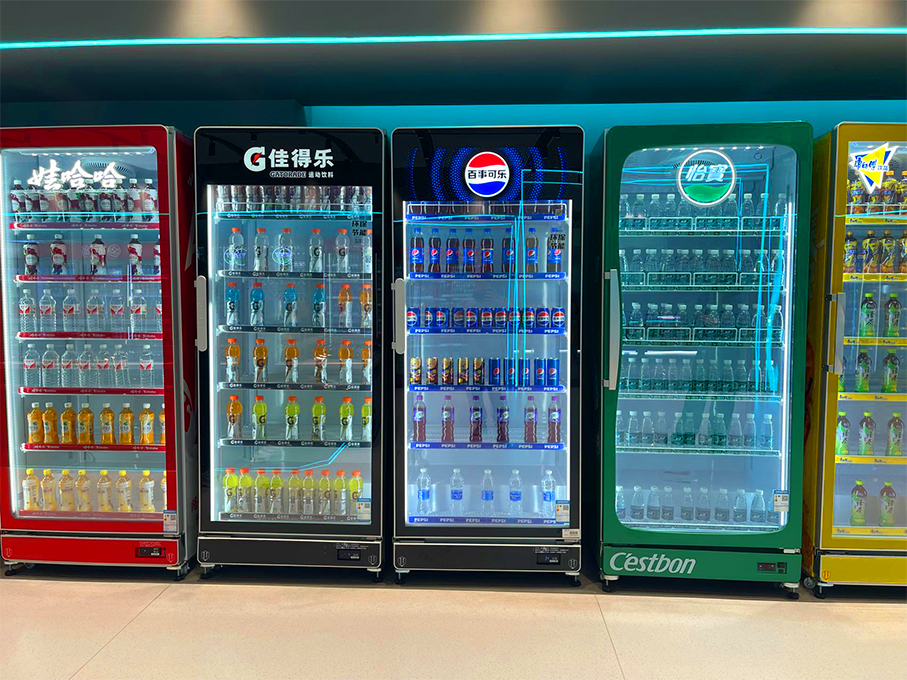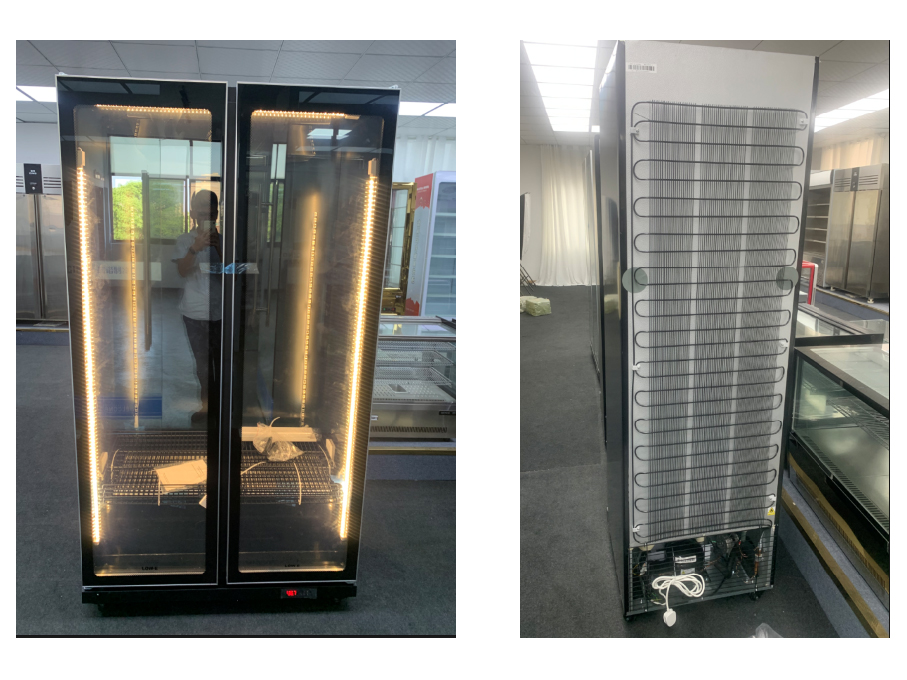Nenwell beverage display cabinets are found worldwide, serving as one of the most prominent display fixtures in numerous convenience stores, supermarkets, and cafes. They not only refrigerate and preserve drinks while facilitating customer access but also directly influence the overall visual appeal and consumer experience of the space. As consumers increasingly demand greater variety, optimal temperature, and enhanced presentation effects for beverages, operators must comprehensively consider multiple factors—including brand positioning, spatial layout, energy efficiency, and after-sales service—when procuring display cabinets.
The following systematically outlines key steps for selecting beverage display cabinets, covering demand analysis, space planning, performance and configuration, operational costs, and maintenance management. First, clearly define your business model and product category requirements. Different beverages have vastly different demands for temperature, humidity, and display methods. Carbonated drinks and bottled water tolerate a wider temperature range but require vertical display with labels facing forward.
Dairy products, juices, and coffee beverages require constant temperature and humidity control to prevent quality degradation from temperature fluctuations; craft beers and energy drinks may even necessitate separate temperature zones. Operators should tally the quantity and packaging specifications of their top-selling products, estimate peak inventory levels, and factor in future expansion plans to determine the display cabinet’s tier count, weight capacity, and effective volume.
For new product launches or seasonal promotions, reserve 10%-20% extra space to avoid frequent cabinet replacements during peak seasons. Next, plan space and traffic flow based on store layout. Beverage displays typically go near entrances or checkout areas to attract impulse buyers.
Select upright or horizontal cabinet types based on store size: Upright cabinets occupy less floor space with wider display surfaces, ideal for convenience stores and small specialty shops; horizontal cabinets offer lower product viewing angles, better suited for large supermarkets or paired with deli sections. Door opening directions and materials should align with customer flow to prevent congestion. For stores with narrow aisles, sliding doors or half-height upright cabinets are recommended.
For stores emphasizing brand image, consider display cabinets with built-in light boxes, custom colors, or matching the color scheme of cash registers and shelves to create visual unity. Performance and configuration are core selection factors. For cold chain performance, focus on temperature control range, heating/recovery speed, defrosting effectiveness, and refrigeration system stability. Inverter compressors significantly reduce energy consumption and noise, making them suitable for stores with extended operating hours.
Air curtain technology and multi-point temperature control ensure uniform temperature distribution across all shelves, preventing localized overcooling or overheating. Glass door light transmission and the insulation properties of double- or triple-pane insulated glass directly impact display aesthetics and cold air loss. For lighting, low-heat LED strips paired with CRI≥80 light sources are recommended—enhancing beverage color vibrancy without adding extra thermal load.
Beyond cold chain performance, evaluate display details. Adjustable grilles and shelves adapt flexibly to varying bottle/can heights; price tag holders and dividers maintain orderly displays; door swing angles and spring-return mechanisms directly impact customer access experience.
For stores with QR code payments or membership systems, reserve space for a small display or install a retail IoT module to facilitate future digital operations. Additionally, smart IoT capabilities are becoming increasingly common, supporting remote monitoring of temperature, energy consumption, and alerts to reduce nighttime inspection burdens.
For high-consumption areas or 24-hour operations, models with night curtains and automatic defrosting, or those capable of reducing power during off-peak hours, offer further energy savings. If located in areas with tight power supply, verify the electrical circuit’s load capacity and install dedicated circuit breakers and ground fault circuit interrupters (GFCIs) to ensure safe operation. Beyond the equipment cost, budget for transportation, handling, installation, and potential custom color options.
After-sales service and maintenance systems are crucial for long-term operation. Prioritize brands with established service networks and ample spare parts supply for faster fault response times. When signing contracts, specify frequencies for routine maintenance, condenser cleaning, and seal inspections, and retain after-sales hotline access. During daily operations, equipping staff with basic maintenance knowledge is vital—such as maintaining rear ventilation space, promptly cleaning product drips, and performing timely defrosting. Proper maintenance significantly extends display cabinet lifespan and reduces product loss from unexpected shutdowns.
In summary, selecting a Nenwell beverage display cabinet involves more than just “purchasing refrigeration equipment.” It requires a comprehensive decision-making process centered on consumer experience, brand image, and operational costs. Begin by determining capacity and layout based on product assortment and sales strategy. Then, conduct a thorough evaluation of cold chain performance, energy efficiency metrics, display details, and after-sales service to identify the solution best aligned with your store’s positioning. Especially in competitive retail environments, an aesthetically pleasing and efficient display cabinet captures visual attention the moment customers enter the store. It ensures consistent refrigeration to preserve beverage quality, ultimately boosting average transaction value and repeat purchase rates. For operators planning expansion or store image upgrades, integrating display cabinet selection into overall brand design—coordinating with lighting, customer flow, and visual merchandising—creates a competitive edge through thoughtful details.
Post time: Nov-26-2025 Views:



